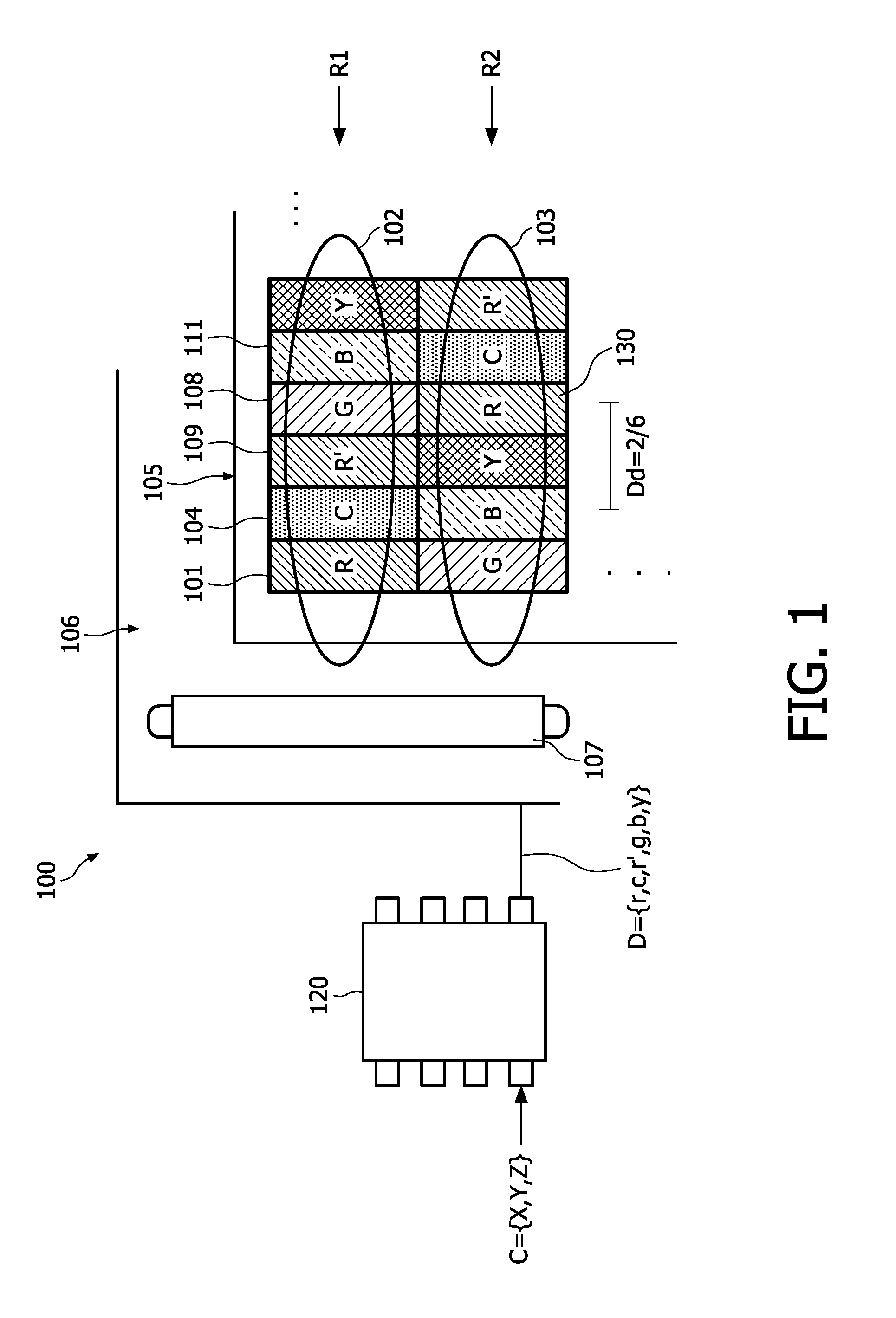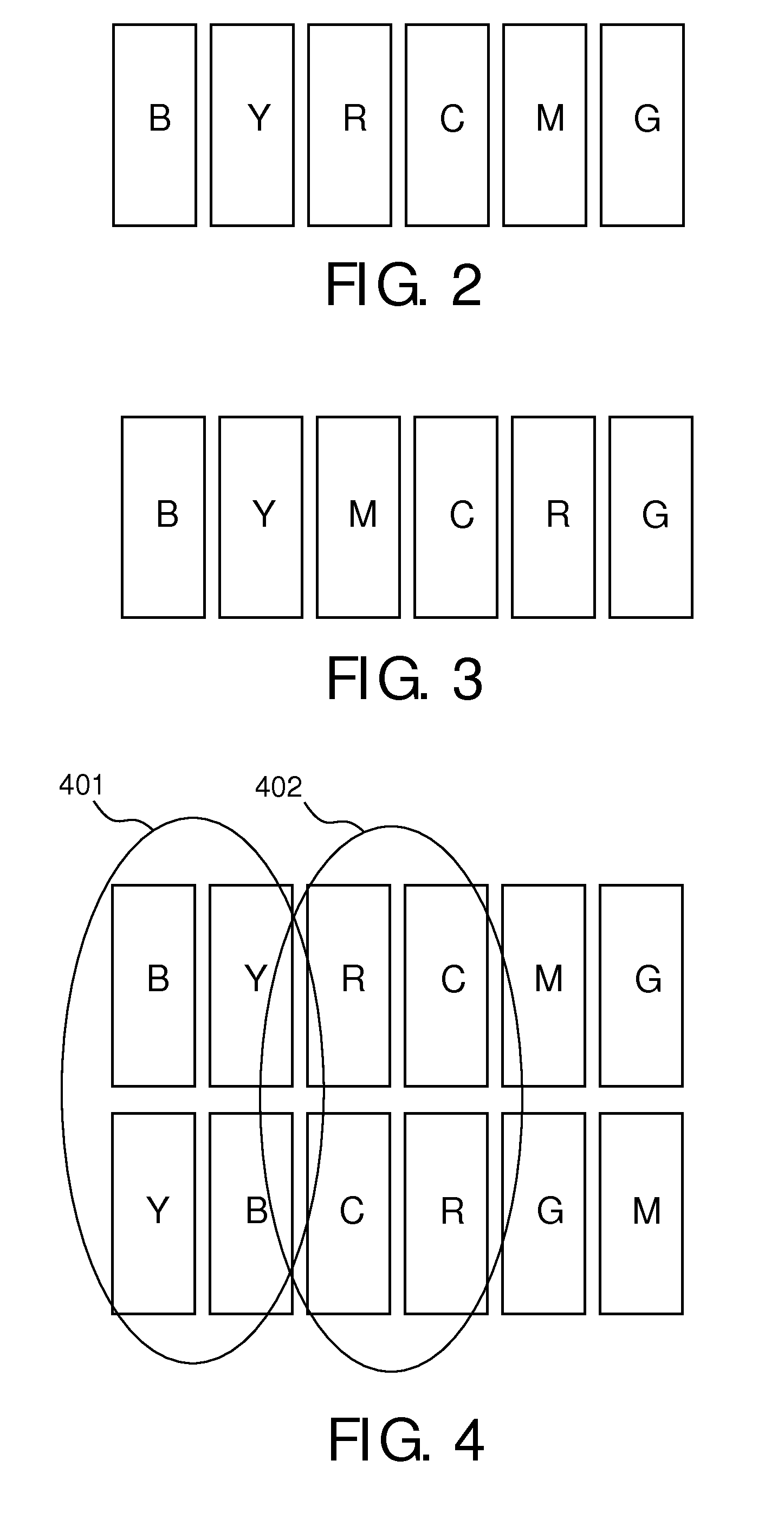Optimal spatial distribution for multiprimary display
a multi-primary display and spatial distribution technology, applied in the field of multi-primary display, can solve the problems of not being able to faithfully render the color rendering of the reproduction of the scene, and the relationship between the color rendering and the scene remains present, and achieve the effect of good image resolution
- Summary
- Abstract
- Description
- Claims
- Application Information
AI Technical Summary
Benefits of technology
Problems solved by technology
Method used
Image
Examples
Embodiment Construction
[0024]FIG. 1 shows an LCD display 100 with subpixels 101, 104, . . . of a light modulator 105 arranged to modulate the light of a backlight module 106, comprising for example a TL lamp 107 or LED module, to render desired colors.
[0025]Some of the subpixels (101, 130) on a grid of the modulator can make red R, which in an LCD typically happens by having an appropriate backlight spectrum multiplied by the transmission curve of a red filter, and a percentage—determined by a red drive value r—of the maximal red output let out under the control of LCD material appropriately actuated by a transistor. The skilled person understands how to build other displays (e.g. plasma, OLED, electronic ink, etc., large or small) and apply our presently described inventive concepts to those.
[0026]One could drive an entire pixel 102 (i.e. all the 6 subpixels in a constrained way, together) to make a certain local color, but then the resolution of the display (or the perceived sharpness) would not be very...
PUM
 Login to View More
Login to View More Abstract
Description
Claims
Application Information
 Login to View More
Login to View More - R&D
- Intellectual Property
- Life Sciences
- Materials
- Tech Scout
- Unparalleled Data Quality
- Higher Quality Content
- 60% Fewer Hallucinations
Browse by: Latest US Patents, China's latest patents, Technical Efficacy Thesaurus, Application Domain, Technology Topic, Popular Technical Reports.
© 2025 PatSnap. All rights reserved.Legal|Privacy policy|Modern Slavery Act Transparency Statement|Sitemap|About US| Contact US: help@patsnap.com



